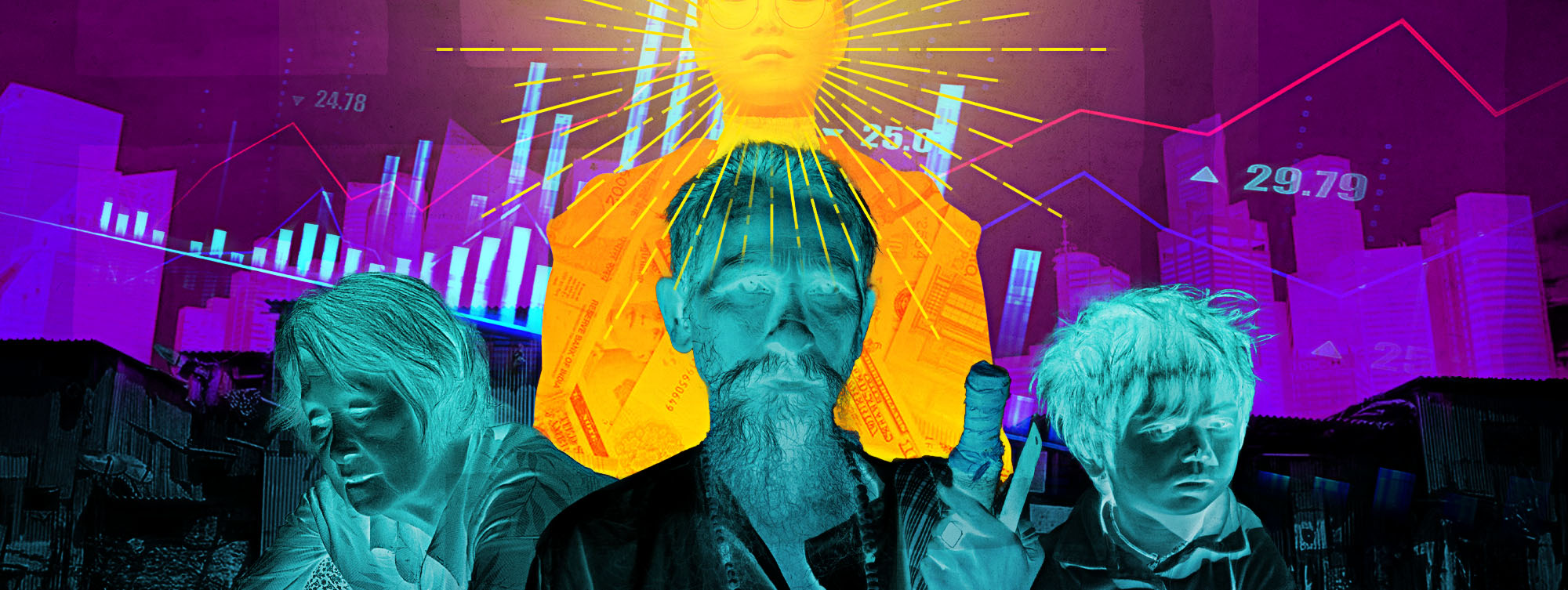|
Getting your Trinity Audio player ready...
|
This article is the third in a 10-part series collectively themed “Fostering Democracy Movements,” an Asia Democracy Network special 10th anniversary report produced by the Asia Democracy Chronicles. The release of this series is also in commemoration of Human Rights Day on December 10, 2023. The entire report can be downloaded here.
Inequality has long been a bane of modern-day democracies, with many activists and scholars suggesting that it is a direct byproduct of capitalism and colonialism, exacerbated by neoliberal policies that privatized public wealth.
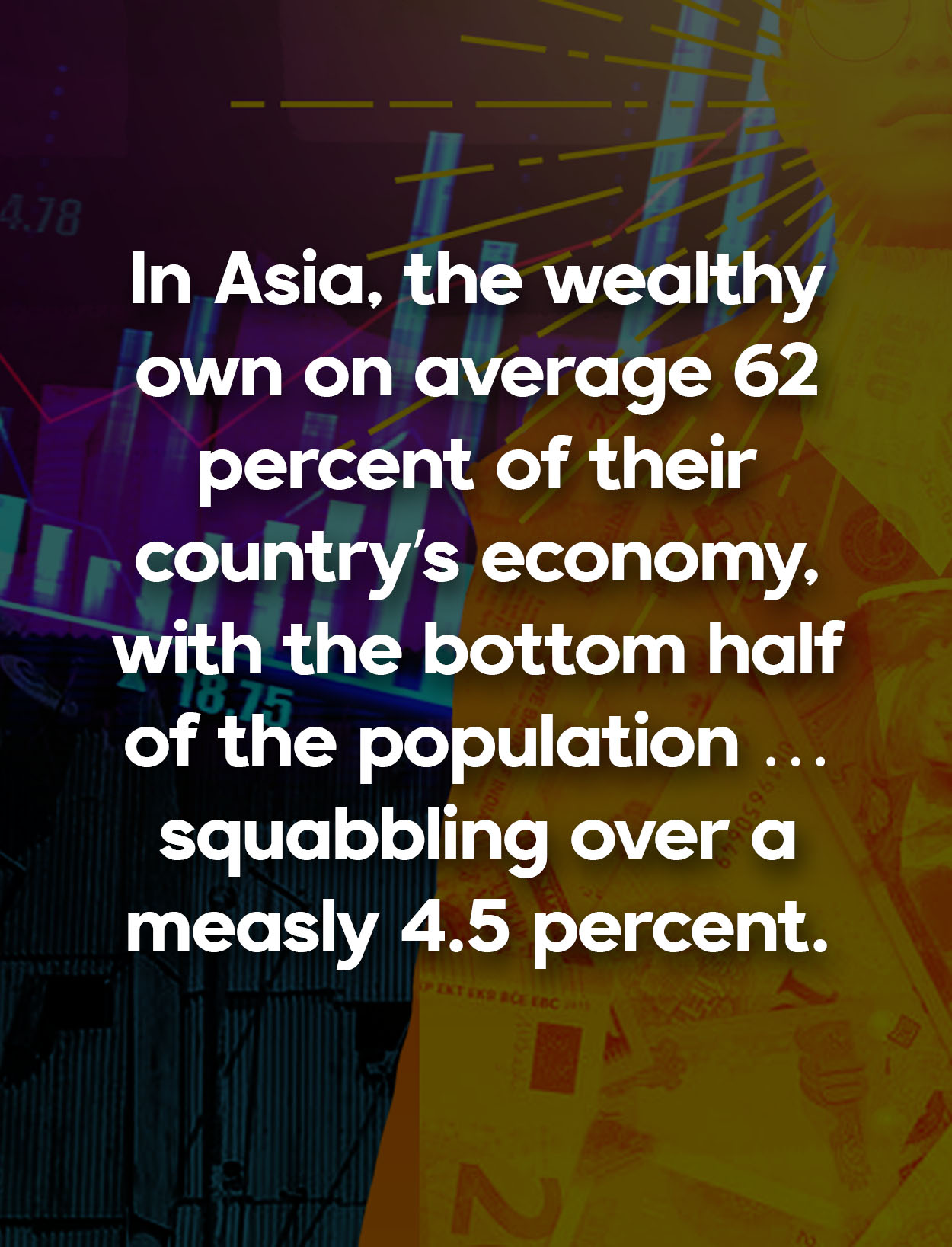
But beginning in the early 2000s and up until a few years ago, Asia had been the largest contributor to reducing global poverty rates – mostly with China and India reducing extreme poverty.
Today, seven of the world’s 30 wealthiest people are from Asia, and yes, most of them are from India and China. Indeed, Asia has seen an acute rise in wealth for the ultra-rich, with India’s billionaires increasing their wealth by 155 percent, or US$1.8 trillion, since the pandemic.
The global health crisis, however, gave rise to policies that not only entrenched those in power, but also limited those enjoying economic benefits to a chosen few. In 2022, the region was home to at least 950 billionaires – even as tens of millions lost their jobs and homes.
At least 975 million in Asia now live below the international poverty line, with 23 percent facing extreme poverty. The last six months alone pushed 36 million more people in South Asia to live in squalor and made one in 10 in the subregion hungry and destitute.
| Runaway inflation |
| Graph 1: Soaring inflation rates hit Asia in 2022, with the darkest shades reflecting the countries that were hardest hit. |
| Source: International Monetary Fund |
In Pakistan, where wheat prices have more than doubled in just a year following a dangerous combination of runaway inflation, rising import costs, and deadly flash floods, the most recent Ramadan saw long lines forming for food dole-outs.
But desperation can sometimes turn to panic; in one food-distribution queue in Karachi in southern Pakistan, a stampede left at least eight women and three children dead. Other food queues elsewhere in the South Asian nation also ended up with fatalities, apparently because of overcrowding that led to stampedes as well.
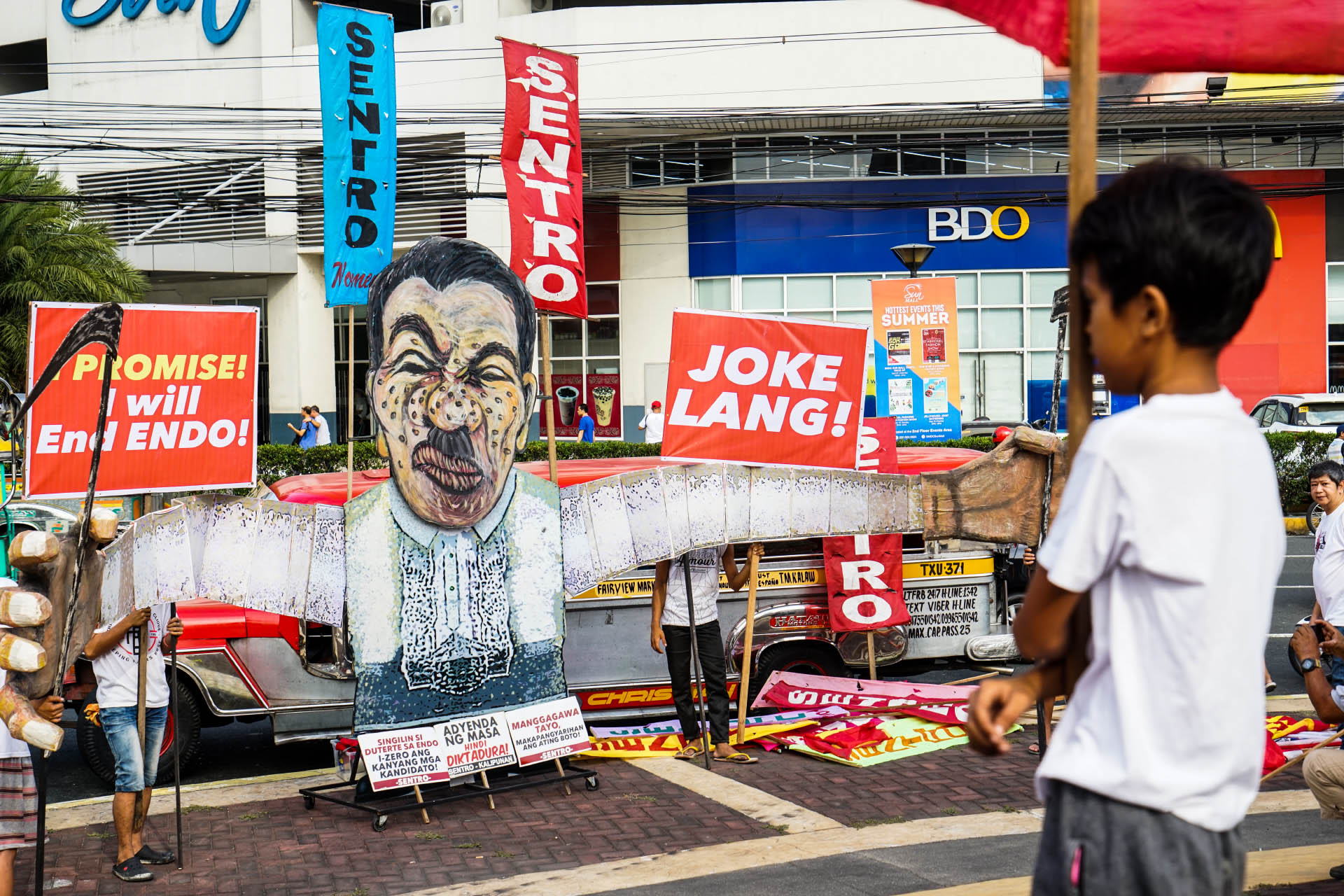
In the hands of a few
In Asia, the wealthy own on average 62 percent of their country’s economy, with the bottom half of the population — mostly peasants, industrial and service workers, and the informal sector — squabbling over a measly 4.5 percent.
| Who owns the wealth? |
| Graph 2: The richest 10% own more than half of the wealth in all countries in Asia. |
| Source: World Inequality Database (2021) |
In Thailand, recent data suggest that three quarters of the country’s wealth is in the hands of the richest 10 percent, with the elite or top one percent holding nearly half (43 percent).
| Wealth distribution |
| Graph 3: Income disparities in Asia replicate wealth inequalities. |
| Source: World Inequality Database (2021) |
The region can be said to have a wealth-begets-wealth income distribution. Elite capture, with the top 10 percent appropriating over 40 percent of national incomes, is evident in 18 of the 23 countries scrutinized for this section. Worse, in the Maldives, India, Thailand, Cambodia, Myanmar, the Philippines, Taiwan, and Malaysia, the top one percent captures at least 20 percent of the national income. In Cambodia, where 15 percent of the population is extremely poor, the elite earn 152 times more than those in the bottom half.
| Income inequality |
| Graph 4: This graph compares the earnings of those at the top to those of the bottom half in the countries listed. |
| Source: World Inequality Database (2021) |
Wage labor’s losses
Across the region, wage labor’s share in the national income has been on decline since 2008. This has only gotten worse since the pandemic. As real wages (defined by the International Labour Organization as actual values of wages received by minimum wage workers relative to prices of basic necessities) stagnate in the region, budgets of workers in Pakistan, Malaysia, Indonesia, and Bangladesh have been decimated by the rising cost of food and fuel. In Pakistan, inflation has cut more than 7.5 percent of minimum wage earners’ income.
| Real wage in Pakistan |
| Graph 5: Pakistan’s changes in real wages and GDP show a decoupling since 2020. |
| Source: International Labour Organization and World Bank |
In India, while the country’s 167 billionaires have seen their wealth soar since the pandemic, the 365 million rural wage earners have experienced at least a nine-percent decline in their purchasing power. But the situation has been far worse for India’s vast informal sector (92.4 percent of the workforce), in which most adults are farmers and agricultural laborers. Indeed, it’s a situation repeated elsewhere in developing Asia, where the great bulk of the workforce remains largely informal.
Decimated workers’ incomes, deteriorating working conditions, jobless growth, corporate tax cuts, and retreat of government subsidies for agriculture have triggered the largest protests in South Asia in recent years. From India’s months-long farmers’ march against Narendra Modi’s Three Farm Laws and Gotabaya Rajapaksa’s ouster in Sri Lanka to Bangladesh’s bloody garment workers’ strikes, organized labor in the subregion is demanding sweeping changes in the increasingly unfair economic landscape.
| Rural wages in India |
| Graph 6: Real wages of India’s rural population are either unchanged or declining despite economic growth. |
| Source: India Budget Economic Survey 2022 |
Missing middle class
The sharp uptick in inequality after the 2008 financial crisis has rendered democracy in Asia “less stable and less resilient” to dictatorship, according to researchers.
Even the middle class – often touted as agents of democratization in the 1990s – is struggling to exist in a crisis-battered Asia. In many countries, they are catastrophically below or just above the international poverty line of US$3.65 per day per capita.
| Middle class income |
| Graph 7: Middle class incomes in many countries in Asia are near global poverty rates. The data presented here are calculated based on the middle 40% earners relative to the bottom 50% and top 10%. Malaysia’s data was added for comparison. |
| Source: World Inequality Database and World Bank |
The massive vacuum left by widening inequalities also proved to be an effective platform for right-wing populists to sway the middle class. Thailand, India, Pakistan, Indonesia, India, and the Philippines are among the countries where authoritarian rulers have seen rising middle-class support for their regimes.
| Middle class squeeze |
| Graph 8: The graph depicts the average income proportion of each of the three segments within the region and its subregions. In South Asia the middle 40% of earners take below the regional average. |
| Source: World Inequality Database |
For sure, economic hardships and crises such as the successive ones experienced recently foster a decoupling of democratic values from their promised prosperity. This is especially true for people living under authoritarian rule, where perceived economic growth directly translates to political trust in governments. Such an assertion has been bolstered by the perceived continuing growth of economies such as those of China (under Xi Jinping), India (under Modi), and Indonesia (under Joko Widodo), while those of countries like Japan, South Korea, and, more recently, Taiwan, have either slowed down or stagnated.
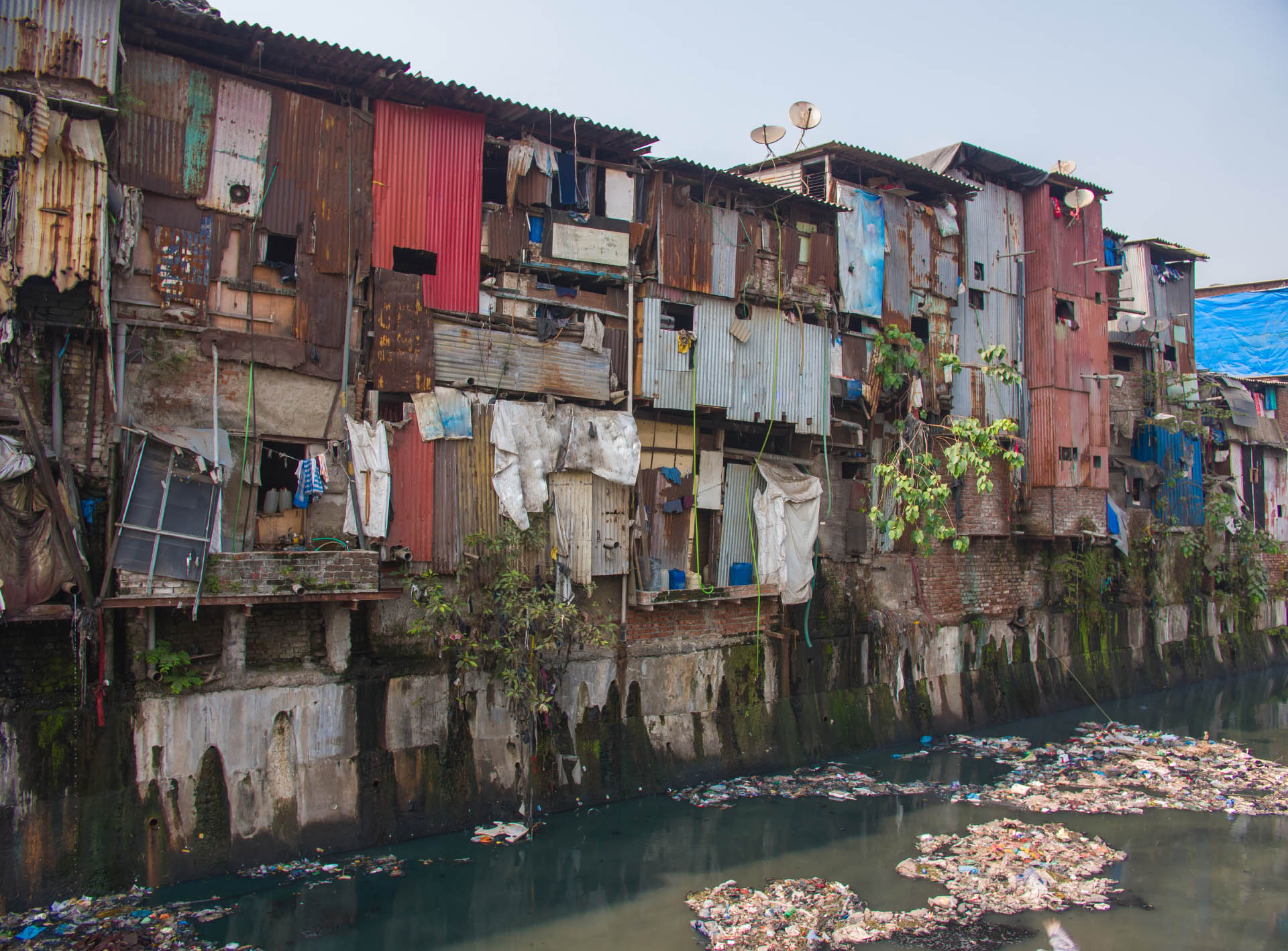
Regressing states, advancing cronies
Interestingly, the ballooning debts that poor countries accrued to stave off COVID-19’s worst economic impacts, along with rising import costs, are propping up ultra-nationalist rhetoric in many developing countries in Asia.
| Ballooning debt |
| Graph 9: More recently, some Asian countries have incurred debts exceeding half of their national incomes. The graph shows selected Asian countries’ debts as a portion of their gross domestic product. |
| Source: International Monetary Fund |
In India, though, Modi has long effectively used xenophobia against religious minorities, especially those in internal colonies such as the northeastern state of Manipur, to stay in power and continue his elite-led “Gujarat economic model.” Scholars argue that this model of crony capitalism, while nothing new, rests on combining religious bigotry with nepotism and corruption.
In the Philippines, then President Rodrigo Duterte, during his six years in office, had his allies entrenched in privileged positions in the telecommunications, power, and media sectors, among others. In Cambodia, landed and rentier elites with ties to the country’s First Family have managed to position themselves strategically to benefit from the corrupt-ridden and debt-fueled economy.
Meanwhile, in Pakistan, the military – which has been the power behind the throne for decades – unveiled plans to take over 405,000 hectares of land for farming and yet even more to be leased to China and Saudi Arabia, just months after the food distribution stampedes and floods. Despite the risks of land and power grabs along with displacement, the proposed move has enjoyed support not only from the increasingly dire voter base but with the country’s courts as well.
Not all crony-laden governments have enjoyed uncontested majoritarian support, however. As the food and energy crisis in Sri Lanka reached a fever pitch in 2022, tens of thousands of protesters stormed the Rajapaksa mansions, as well as the private home of then Prime Minister Ranil Wickremesinghe, to oust the kleptocracy.
A resounding “Gota Go Home” chased the cronies out of the palace, and then President Rajapaksa himself was forced to flee as debt defaults sent food prices doubling amid rolling blackouts. Rajapaksa wound up in Singapore, where he announced his resignation from his post.
Rajapaksa has since made his way back to Sri Lanka, but it is now Wickremesinghe who is president. The country is still in a deep economic crisis, while the present government has tightened the screws on many of the people’s rights.
The 2022 people’s uprising in Sri Lanka may have harked to a tried-and-tested pathway to keep corrupt and self-aggrandizing executives in check. But Sri Lanka’s continuing woes point to more systemic problems that have been left to fester. ◉










